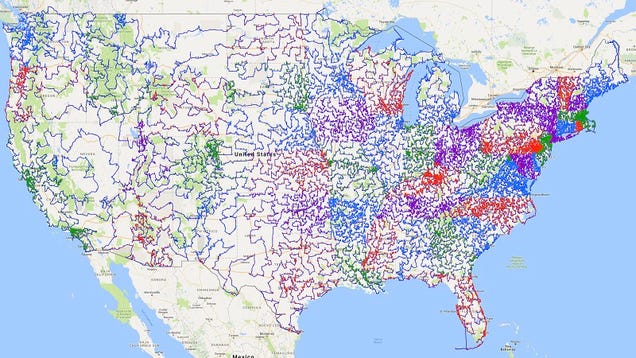For nearly 30 years, some scientists and many liberal activists have been alleging that the world is on the verge of collapse because of humans’ use of fossil fuels, which they say have been causing global warming.
For example, the San Jose Mercury News (Calif.) reported on June 30, 1989: “A senior environmental official at the United Nations, Noel Brown, says entire nations could be wiped off the face of the earth by rising sea levels if global warming is not reversed by the year 2000. Coastal flooding and crop failures would create an exodus of ‘eco-refugees,’ threatening political chaos, said Brown, director of the New York office of the U.N. Environment Program. He said governments have a 10-year window of opportunity to solve the greenhouse effect before it goes beyond human [control.]”
But despite the constant cries from the left proclaiming the “science is settled” and that there’s a “scientific consensus,” there are many reasons to reject these assumptions. Here are six of the most important ones:
1. Climate alarmists’ temperature-predicting track record is abysmal.
Most people don’t know anything about climate science, and with all that’s going on in the world, who can blame them? Instead of studying the issue for themselves, people rely on the media and the scientists the media has promoted to provide them with scientific conclusions. In other words, to the extent the public believes in the theory humans are responsible for global warming, it’s because they trust the scientists and media outlets they hear from most often on this issue, but should they? Based on climate-alarmist scientists’ track record, the answer is clearly “no.”
Over the past three decades, many climate scientists have repeatedly made a number of significant and alarming predictions about global warming, and the vast majority of the time, they’ve been wrong—really, really wrong. As Roy Spencer—who earned his Ph.D. in meteorology from the University of Wisconsin in 1981 and previously served as the senior scientist for climate studies at NASA’s Marshall Space Flight Center—wrote in 2014, greater than 95 percent of the climate models through 2013 “over-forecast the warming trend since 1979.”
2. Climate alarmists’ predictions about extreme weather and other crises have also failed.
It’s common for climate alarmists to argue that global warming has caused and will continue to cause a significant increase in extreme weather events, including hurricanes, and that sea levels will eventually rise to the point that massive cities will someday be flooded and uninhabitable, but the available data say otherwise.
H. Sterling Burnett, Ph.D., a research fellow specializing in environment and climate issues for The Heartland Institute, where I work as executive editor, wrote in January for Red State, “For instance, climate models predicted more intense hurricanes, but for nearly a decade, the United States has experienced far fewer hurricanes making landfall than the historic average, and those hurricanes that have made landfall have been no more powerful than previously experienced.”
“Additionally,” Burnett continued, “while scientists have claimed anthropogenic warming should cause sea levels to rise at increasing rates—because of melting ice caps in Greenland and Antarctica and the thermal expansion of water molecules under warmer conditions—sea-level rise has slowed. Sea levels have always risen between ice ages or during interglacial periods. Indeed, sea levels have risen more than 400 feet since the end of the last interglacial period. However, the rate of sea-level rise since 1961 (approximately one-eighth of an inch per year) is far lower than the historic average (since the end of the previous ice age), and sea-level rise has not increased appreciably over the past century compared to previous centuries.”
3. There are many unexplainable problems with the theory rising carbon-dioxide levels have caused global temperature to increase.
One of the most common misconceptions in the climate-change debate is that skeptics reject the claim global temperatures have risen in recent decades. Virtually everyone agrees temperatures have increased, the primary issue is the reason or reasons for those increases. Climate-change alarmists say humans are to blame, and skeptics believe, to varying degrees, humans’ responsibility is relatively minimal or nonexistent. One of the reasons, but not the only reason, many skeptics have rejected the assertion carbon-dioxide and temperature are linked is that there have been periods during the past two centuries in which global temperature has dropped or paused.
For instance, from the 1940s to the 1970s, Earth experienced a global cooling period, even while carbon-dioxide levels continuously rose. In the early 21st century, global temperature “paused” for 18 years, again during a period in which carbon-dioxide levels increased.
4. It’s not clear the most widely used climate data are accurate.
For many years, climate skeptics, concerned by numerous leaked documents showing climate data had been unscientifically altered to make it appear as though warming had been more significant than it actually was, have argued many of the climate datasets advanced by prominent organizations, including NASA, are not accurate. A new peer-reviewed study by prominent researchers James P. Wallace III, Joseph S. D’Aleo and Craig Idso seems to support that belief.
In their study, titled “On the Validity of NOAA, NASA and Hadley CRU Global Average Surface Temperature Data and the Validity of EPA’s CO2 Endangerment Finding,” the researchers “sought to validate the current estimates of GAST [global average surface temperature] using the best available relevant data,” the authors wrote. “This included the best documented and understood data sets from the U.S. and elsewhere as well as global data from satellites that provide far more extensive global coverage and are not contaminated by bad siting and urbanization impacts.”
They concluded—by comparing trusted raw climate data with the widely used altered datasets, which have been adjusted to account for numerous problems, such as contamination from heat in urban areas—the datasets used by NASA, the National Oceanic and Atmospheric Administration and the Met Office in the United Kingdom “are not a valid representation of reality.”
“In fact, the magnitude of their historical data adjustments, that removed their cyclical temperature patterns, are totally inconsistent with published and credible U.S. and other temperature data,” the researchers wrote. “Thus, it is impossible to conclude from the three published GAST data sets that recent years have been the warmest ever — despite current claims of record setting warming.”
5. Even if humans are creating a slightly warmer climate, it’s not necessarily a bad thing.
The underlying assumption that virtually all climate alarmists operate under is that the warming Earth is experiencing now is harmful, destructive and dangerous, but there is much evidence to suggest that moderate warming benefits most plants, animals and humans. We know, for instance, that plants grow significantly better with higher carbon-dioxide concentrations, which is why many greenhouses pump additional CO2 into their buildings.
It’s also been confirmed by multiple studies that greening has increased in recent decades — and likely because of higher carbon-dioxide concentrations. According to a study by Martin Brandt et al., published in the journal Nature Ecology & Evolution in May, 36 percent of the continent of Africa became greener over the 20-year period from 1992 to 2011, while only 11 percent became “less green.” Interestingly, the researchers found the increased greening was likely “driven” by higher carbon-dioxide levels and precipitation, and the decreased greening was largely a result of humans cutting down vegetation.
A greener planet means there is more food for humans and animals to consume, but a cooler global climate has historically been associated with significant food shortages and, in extreme cases, starvation. An article in the influential journal The Lancet, published in 2015, examined health data from 13 countries, accounting for more than 74 million deaths. The authors concluded cold weather, directly or indirectly, kills 1,700 percent more people than hot weather.
6. There’s no reason to believe humans won’t develop cheap, energy alternatives during the next century.
Let’s assume the climate is warming because of human action and will eventually become problematic. The most serious problems are still a century or more away, even under some of the most dire, scientifically unsupported models. That means the world has at least a half-century to come up with alternate energy sources and determine once and for all whether fossil-fuels are truly causing the problem.
A century ago, civilized nations were still fighting each other on horseback and traveling using steam engines. Fifty years ago, cellphones were the stuff of science fiction. Thirty years ago, the average American household didn’t have a computer. Today, people fly across the world in a few hours on planes equipped with WIFI, allowing them to access a nearly endless supply of news, information, and entertainment using pocket-sized super computers. Does anyone really think energy won’t change over the next century as well?
Being a climate-change skeptic doesn’t mean you deny Earth’s climate has warmed or scientific findings. It simply means that you let facts, not speculation and fear-mongering, guide how you view the debate. If that sounds reasonable, then you’re probably a climate-change skeptic too.
Justin Haskins is executive editor and a research fellow at The Heartland Institute.

 Buried in the credits of An Inconvenient Sequel, former vice president Al Gore and filmmakers make it clear they paid to make up for carbon generated during production. That’s part of Gore’s greenwashing of his documentaries through purchases of carbon offsets from Native Energy.
Buried in the credits of An Inconvenient Sequel, former vice president Al Gore and filmmakers make it clear they paid to make up for carbon generated during production. That’s part of Gore’s greenwashing of his documentaries through purchases of carbon offsets from Native Energy.














